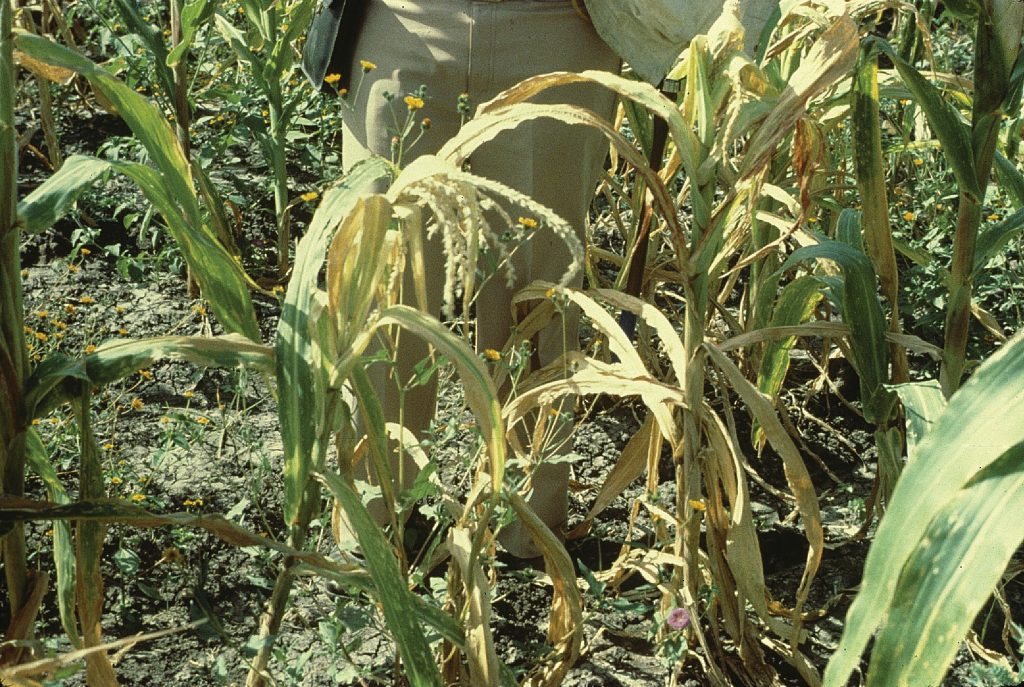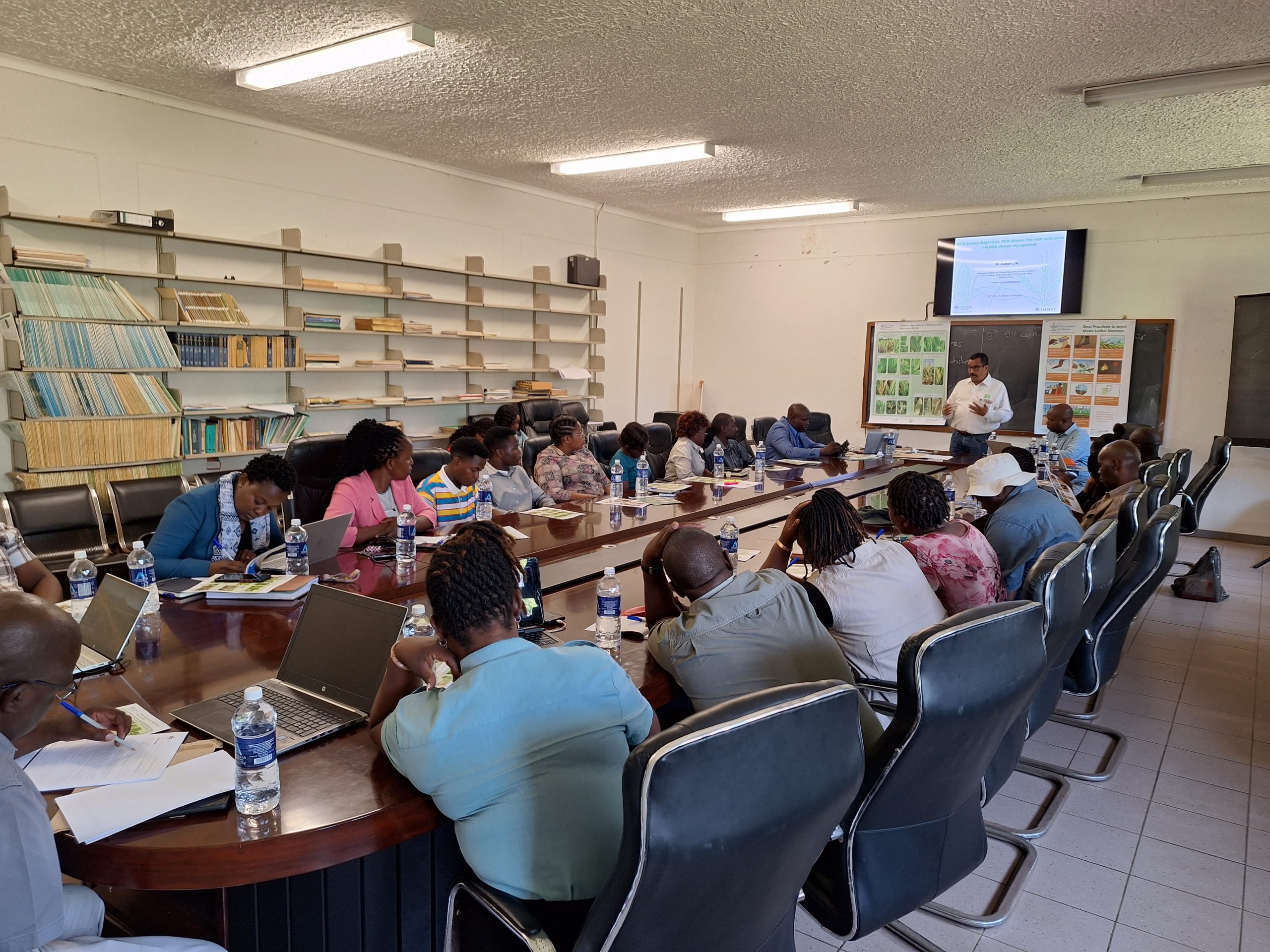Maize is a staple crop in Zimbabwe, playing a vital role in the country’s agricultural landscape as food for its own people and an export good. However, behind every successful maize harvest lies the quality of seed and resistance to diseases and stresses.
Amidst the multitude of diseases that threaten maize crops, one adversary is maize lethal necrosis (MLN). Though not native to Zimbabwe, it is crucial to remain prepared for its potential impact on food security.
What is maize lethal necrosis?
MLN is a viral disease, caused by a combination of two virus diseases. The disease emerged in Kenya in 2011 and quickly spread to other countries in eastern Africa. The introduction of MLN to Africa was likely affected by the movement of infected seed and insect vectors. MLN has had a severe impact on regional maize production, leading to yield losses of up to 90%.
Recognizing the need to equip seasoned practitioners with the knowledge and skills to effectively diagnose and manage MLN, CIMMYT organized a comprehensive training on MLN diagnosis and management, targeting 25 representatives from Zimbabwe’s Plant Quarantine Services.
From students to experienced technicians, pathologists and plant health inspectors, this was an opportunity to refresh their knowledge base or an introduction to the important work of MLN mitigation. “This training for both advanced level practitioners and students is crucial not only for building competence on MLN but also to refresh minds to keep abreast and be prepared with approaches to tackle the disease once it is identified in the country,” said Nhamo Mudada, head of Plant Quarantine Services.

Expectations were diverse, ranging from sharpening understanding of key signs and symptoms to learning from country case examples currently ridden with the disease. With CIMMYT’s guidance, practitioners learned how to identify MLN infected plants, make accurate diagnoses, and implement management strategies to minimize losses.
“For over 10 years, these trainings have been important to raise awareness, keep local based practitioners up to speed, help them diagnose MLN, and make sure that they practice proper steps to tackle this disease,” said L.M Suresh, CIMMYT maize pathologist and head of the MLN screening facility in Kenya.
Identifying the specific MLN causing viral disease affecting a maize plant is the first step in combating MLN. Determining whether it is a biotic or abiotic disease is critical in establishing its cause and subsequent diagnosis. By implementing proper diagnostic techniques and understanding the fundamentals of good diagnosis, practitioners can bring representative samples to the lab and accurately identify MLN.
Tackling MLN in Zimbabwe
Initiated in 2015 at Mazowe as a joint initiative between the Government of Zimbabwe and CIMMYT, a modern quarantine facility was built to safely import maize breeding materials from eastern Africa to southern Africa and enable local institutions to proactively breed for resistance against MLN.
The MLN quarantine facility at the Plant Quarantine Institute is run by the Department of Research and Specialist Services (DRSS) and is mandated to screen maize varieties imported under strict quarantine conditions to ensure that they are MLN-free.

To date, CIMMYT and partners have released 22 MLN resistant and tolerant hybrids in eastern Africa. CIMMYT’s research and efforts to combat MLN have focused on a multidimensional approach, including breeding for resistant varieties, promoting integrated pest management strategies, strengthening seed systems, and enhancing the capacity of farmers and stakeholders.
“Support extended through valuable partnerships between CIMMYT, and the collaborations have played a pivotal role from surveillance to diagnostics and building capacity,” said Mudada.
Feedback and insights
Chief Plant Health Inspector for Export and Imports Biosecurity, Monica Mabika, expressed gratitude for the training. “It is always an honor when we have expert pathologists come through and provide a valuable refresher experience, strengthening our understanding on issues around biosecurity and learning what other countries are doing to articulate MLN,” she said.

Among the students was Audrey Dohwera from the University of Zimbabwe, who acknowledged the importance of the training. “I have been attached for 2 months under the pathology department, and I was eager to learn about MLN, how to detect signs and symptoms on maize, how to address it and be able to share with fellow farmers in my rural community,” she said.
With the knowledge gained from this training, practitioners are well equipped to face the challenges that MLN may present, ultimately safeguarding the country’s maize production status.
